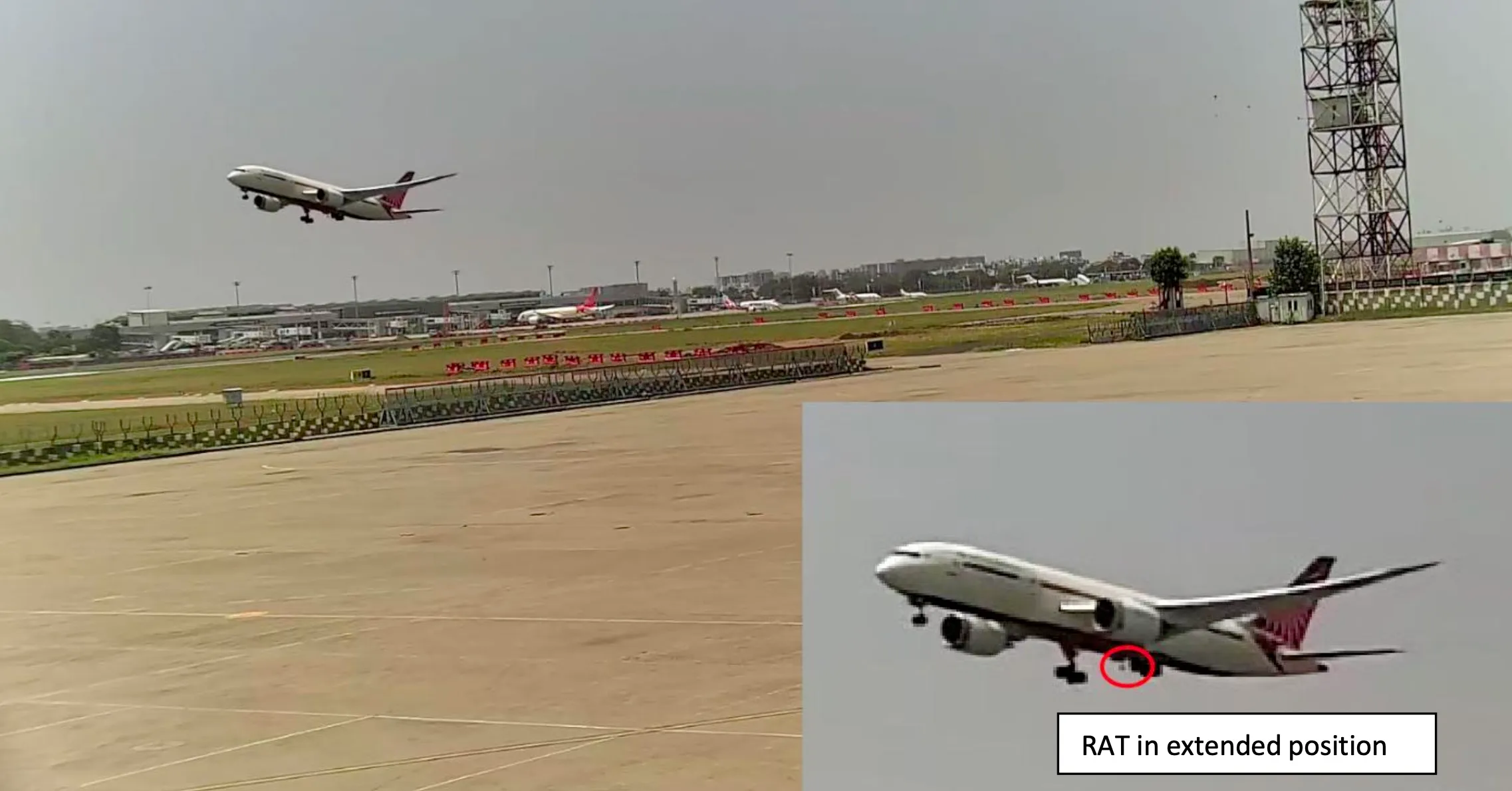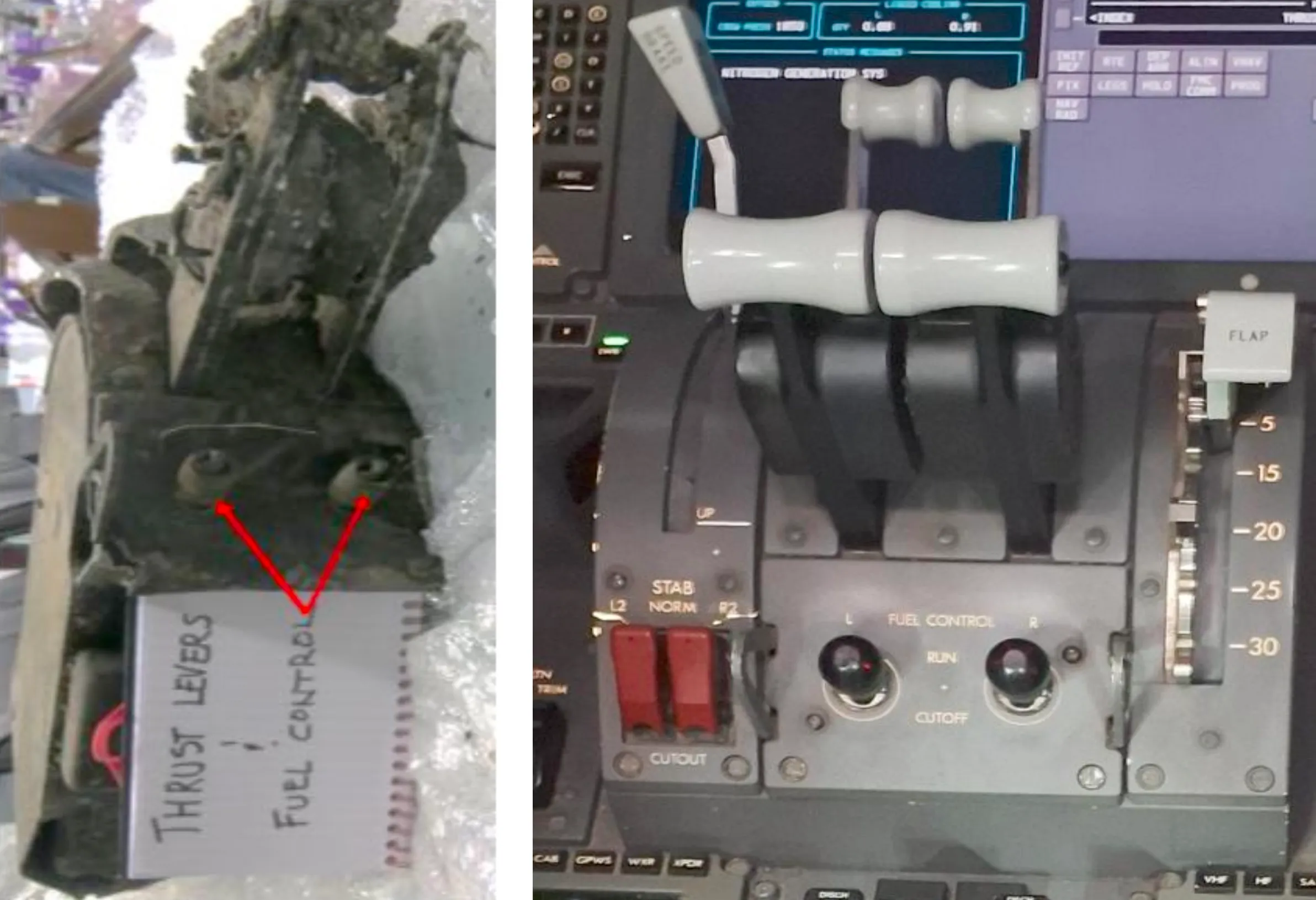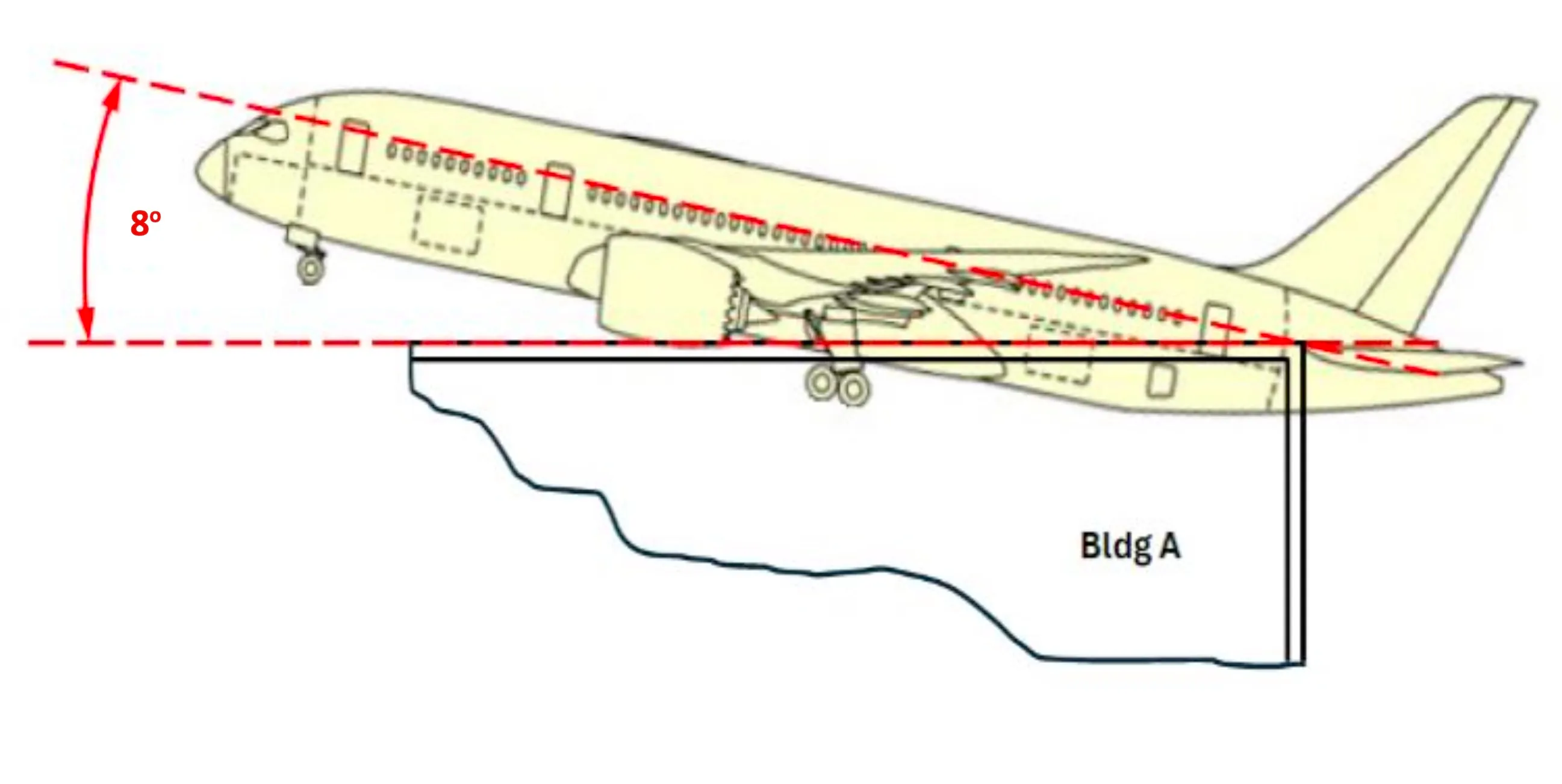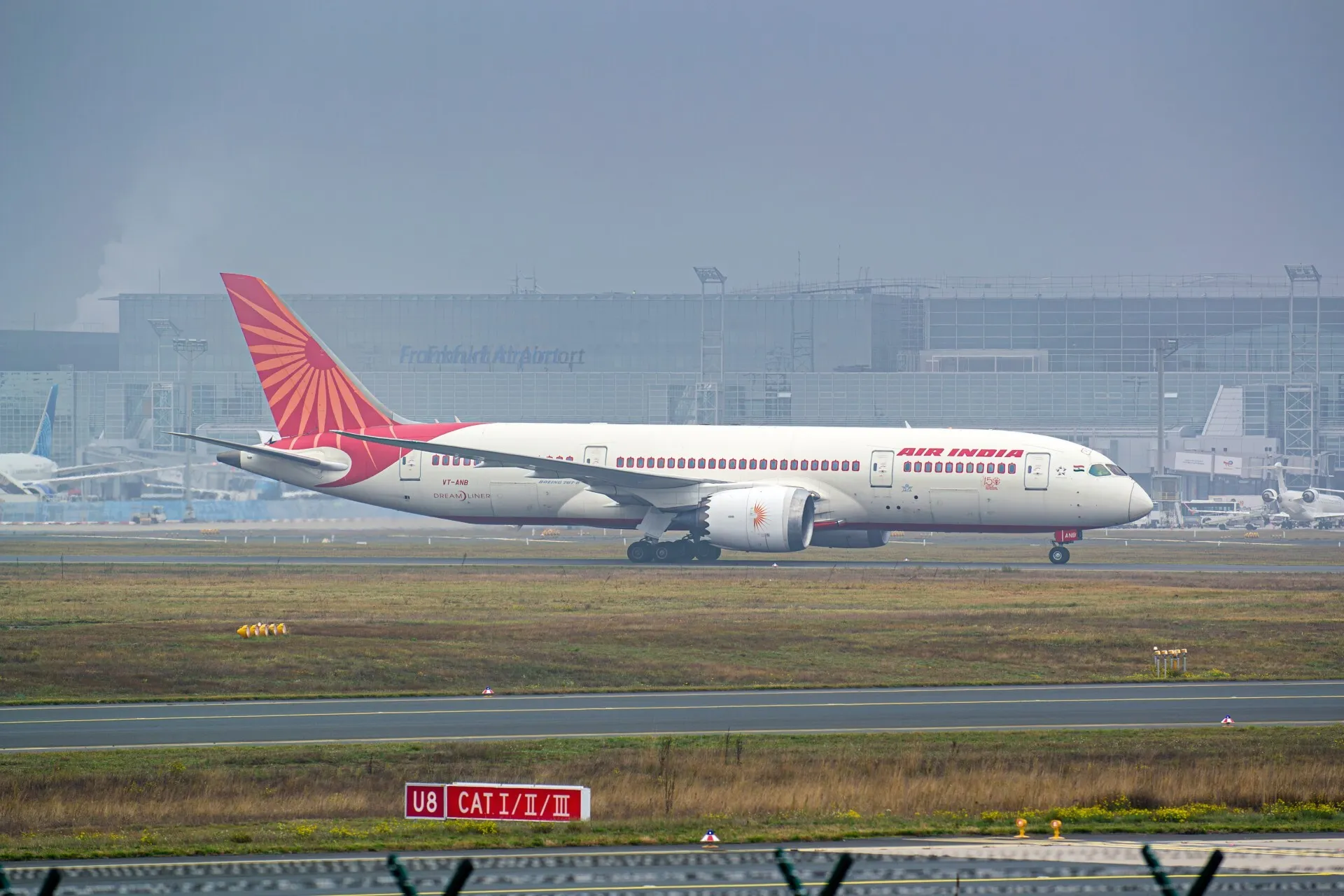AHMEDABAD — On June 12, 2025, tragedy ensued just moments after takeoff from Sardar Vallabhbhai Patel International Airport (AMD) as Air India (AI) flight AI171, a Boeing 787-8 Dreamliner registered as VT-ANB, crashed into the BJ Medical College and Hospital hostel near the airport.
We’ve looked at AAIB's preliminary report by India's Aircraft Accident Investigation Bureau (AAIB), which confirms an unexplained engine fuel switch movement which ultimately led to the loss of all 12 crew members and 229 passengers, with 19 fatalities on the ground, making it one of the deadliest aviation accidents in Indian history.
The following is a summary of the initial findings in the report.
The Flight, Immediate Aftermath
Flight AI171 was operating a scheduled passenger service to London Gatwick Airport (LGW) with 230 passengers, 10 cabin crew, and two pilots on board. At 08:07 UTC (13:37 IST), the aircraft was cleared for takeoff from Runway 23.
As per the report, “The aircraft achieved the maximum recorded airspeed of 180 Knots IAS at about 08:08:42 UTC, and immediately thereafter, the Engine 1 and Engine 2 fuel cutoff switches transitioned from RUN to CUTOFF position one after another with a time gap of 01 sec. The Engine N1 and N2 began to decrease from their take-off values as the fuel supply to the engines was cut off.”
At 08:09 UTC, a “MAYDAY” call was received from the flight crew. Moments after, the aircraft plummeted into the BJ Medical College hostel complex, 0.9 nautical miles from the runway's end.
The crash site spanned approximately 1,000 by 400 feet, with wreckage strewn across six buildings—designated A through F—many of which sustained catastrophic fire and structural damage. The tail section embedded itself into Building A, while the engines, wings, and other components were found across adjacent rooftops and courtyards.
Unexplained Engine Fuel Cutoff
Why the aircraft's forward Enhanced Airborne Flight Recorder (EAFR) revealed a sudden transition of both engine fuel control switches from RUN to CUTOFF just seconds after lift-off is still a mystery. Cockpit voice recordings capture one pilot asking, "Why did you cut off?" with the other replying, "I didn't."
This simultaneous shutdown led to both engines losing thrust. The Ram Air Turbine (RAT) deployed automatically to maintain minimal hydraulic power, and the aircraft attempted an in-air relight. Engine 1 showed signs of successful recovery, while Engine 2 failed to stabilize.
Despite efforts to recover power, the plane was unable to maintain altitude and crashed less than 90 seconds after takeoff.
The Dual Engine Fail/Stall Checklist
The following is the Dual Engine Fail/Stall checklist from the Boeing 787 Flight Crew Operations Manual, with steps 1 and 2 being memory actions as per the Quick Reference Handbook (QRH):
Condition: Engine speed for both engines is below idle.
Steps:
- FUEL CONTROL switches (both) ............ CUTOFF, then RUN
- RAM AIR TURBINE switch ............ Push and hold for 1 second
- Set airspeed above 270 knots
- APU selector (if APU available) ............ START, then ON
- If volcanic ash is suspected:
- Go to the Volcanic Ash checklist on page 7.45, if not already done, and return to this checklist when directed
- The engines can accelerate to idle very slowly, especially at high altitudes. The time from fuel control switch to RUN to stable idle can take up to two and a half minutes.
- Do not interrupt the start attempts. Move the fuel control switch to CUTOFF only when no further start attempts are needed.
- When one engine is running:
- STAB cutout switches (both) ............ NORM
- The STABILIZER message can show. The stabilizer functions normally when power is restored.
Back to the AI171 flight deck. Our initial thought is that either one or both pilots sensed an engine failure/stalling, which requires for both fuel control switches to be moved to CUTOFF but then quickly back to RUN within a couple of seconds, as per the above checklist. However, the 10-second time gap from the CUTOFF to the switch back to RUN could discount this.
Also the fact that one pilot wasn’t aware of what the other was doing signals to a lack of coordination, making this scenario less likely. Furthermore, given that the pilots denied moving the fuel control switches makes it even less likely that one was trying to respond with the DUAL ENGINE FAIL/STALL actions.
Another scenario would involve sabotage, a suicide attempt, some type of human interference or simply a human input that was no called for.
It is worth noting that the report does not clearly state that both engines were running normally. This is key. If there was an engine problem, and one of the pilot performed the memory action, that could describe the initial switch movement. However, the switch-back to RUN should have happened in a matter of seconds, not 10 seconds.
If the report had more information on the serviceability of the engines, when the fuel switches were installed, removed or last maintained, that could shed more light on the final moments of flight AI171.

Timeline of Events
Based on the preliminary report, here is a precise timeline of the events, including clearance time, fuel cutoff, and reactivation events for both engines, and the elapsed time in seconds between those events:
1. Takeoff Clearance, Roll Start
- Takeoff Clearance Time: 08:07:33 UTC
- Takeoff Roll Start: 08:07:37 UTC
(Aircraft began rolling 4 seconds after clearance.)
2. Fuel Cutoff Events
- Vr (Rotation Speed) Achieved: 08:08:35 UTC
- Liftoff Detected (Air Mode): 08:08:39 UTC
- Maximum Airspeed Recorded (180 Kts): 08:08:42 UTC
Fuel Cutoff Switch Movements:
- Engine 1 (Left) Cutoff: 08:08:43 UTC (estimated)
- Engine 2 (Right) Cutoff: 08:08:44 UTC (estimated)
"The Engine 1 and Engine 2 fuel cutoff switches transitioned from RUN to CUTOFF one after another with a time gap of 01 sec."
Elapsed Time from Takeoff Clearance to Engine 1 Cutoff:
- 08:08:43 − 08:07:33 = 70 seconds
Elapsed Time from Roll Start to Engine 1 Cutoff:
- 08:08:43 − 08:07:37 = 66 seconds
3. Fuel Switch Reactivation (RUN)
- Engine 1 Switch from CUTOFF to RUN: 08:08:52 UTC
- Engine 2 Switch from CUTOFF to RUN: 08:08:56 UTC
Elapsed Time Between Switch OFF and ON:
- Engine 1: 08:08:52 − 08:08:43 = 9 seconds
- Engine 2: 08:08:56 − 08:08:44 = 12 seconds

Crew, Aircraft, Weather Conditions
The flight crew consisted of an experienced 56-year-old captain with over 15,000 flight hours (8,596 on the Boeing 787) and a 32-year-old first officer with over 3,400 hours (1,128 on the B787). The co-pilot was flying at the time of the incident.
It is worth noting that the report states that once the crew of flight AI171 arrived at the airport, they “underwent a preflight Breath Analyzer test at 06:25 UTC and were found fit to operate the flight."
As for the aircraft involved, the Boeing 787-8, serial number 36279, was delivered in 2013 and had accumulated 41,868 flight hours. Both GEnx-1B model engines had been recently installed (May and March 2025).
No major technical defects were reported before departure, though five Minimum Equipment List (MEL) items were active, including one concerning the nitrogen generation system.
The weather at the time of the accident was clear, with visibility of 6,000 meters and calm winds (250° at 7 knots). No significant meteorological factors have been linked to the incident.

Early Theories, Investigation Progress
While sabotage or intentional crew action has not been ruled out, investigators are closely examining the possibility of mechanical or system-induced causes, mainly focusing on the throttle quadrant, fuel control switches, and historical concerns related to similar parts on Boeing aircraft.
Notably, a 2018 FAA bulletin (SAIB NM-18-33) warned of disengaged fuel control switch locking mechanisms, though it was not deemed an airworthiness directive.
Regarding any crew action, our in-house analysts have discussed whether the cutoff switches were manually moved from RUN to CUTOFF just after rotation, and if such actions could be deliberate, contradicting the cockpit voice recording, or the result of muscle memory confusion.
The report mentions that initial inspections show both thrust levers were in the idle position at impact, though data confirms they remained at takeoff thrust settings until the fuel cutoff. The flap handle was set to 5°, consistent with standard takeoff configuration.
Both flight recorders were recovered—one severely damaged and unreadable. The other provided key data is now under further analysis. APU data confirms the system attempted to engage automatically during the emergency sequence.
In line with ICAO protocols, the AAIB has included Accredited Representatives from the U.S. NTSB, Boeing, GE, and FAA, as well as investigation authorities from the UK, Portugal, and Canada, home countries of several foreign nationals among the victims.
A team of subject matter experts in aviation medicine, engineering, and human factors has also joined the inquiry.
Next Steps
As the investigation continues, no safety directives have yet been issued for Boeing 787-8 or GE GEnx operators. The AAIB has secured the wreckage, retrieved engine components, and is analyzing limited onboard fuel samples. Witness accounts and forensic examinations are underway to explore possible human or technical factors behind the engine shutdown.
This accident has resurfaced concerns about redundant systems and human-machine interface reliability in modern jets. A complete final report with safety recommendations is expected in the coming months.
This is a developing story. Airways will continue to monitor and report on any updates from the AAIB and related agencies.




